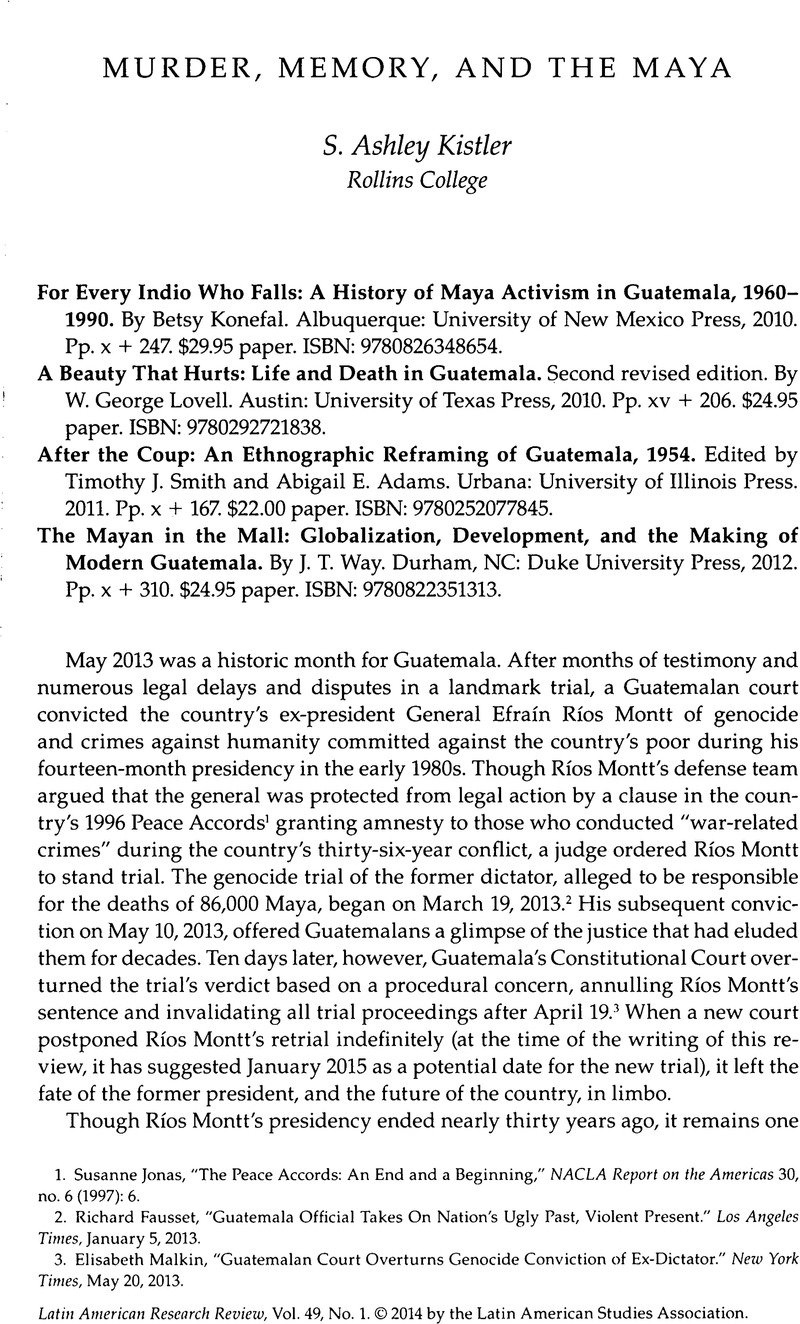No CrossRef data available.
Published online by Cambridge University Press: 05 September 2022

1. Susanne Jonas, “The Peace Accords: An End and a Beginning,” NACLA Report on the Americas 30, no. 6 (1997): 6.
2. Richard Fausset, “Guatemala Official Takes On Nation's Ugly Past, Violent Present.” Los Angeles Times, January 5, 2013.
3. Elisabeth Malkin, “Guatemalan Court Overturns Genocide Conviction of Ex-Dictator.” New York Times, May 20, 2013.
4. Diane M. Nelson, Reckoning: The Ends of War in Guatemala (Durham, NC: Duke University Press, 2009), 74.
5. Elizabeth Burgos-Debray, I, Rigoberta Menchú: An Indian Woman in Guatemala (New York: Verso, 1984).
6. David Stoll, Rigoberta Menchú and the Story of All Poor Guatemalans (Boulder, CO: Westview Press, 1998).
7. See Arturo Arias, The Rigoberta Menchú Controversy (Minneapolis: University of Minnesota Press, 2001).
8. Burgos-Debray, I, Rigoberta Menchú, 80–86; Bruce J. Calder, “Interwoven Histories: The Catholic Church and the Maya, 1940 to the Present,” in Resurgent Voices in Latin America: Indigenous Peoples, Political Mobilization, and Religious Change, ed. Edward L. Cleary and Timothy J. Steigenga (New Brunswick, NJ: Rutgers University Press, 2004), 93–124; Abigail E. Adams, “Reviving Our Spirits: Revelation, Re-encuentro, and Retroceso in Post-Peace Accords Verapaz,” in Mayas in Postwar Guatemala: Harvest of Violence Revisited, ed. Walter E. Little and Timothy J. Smith (Tuscaloosa: University of Alabama Press, 2009), 30–41; Beatriz Manz, Paradise in Ashes: A Guatemalan Journey of Courage, Terror, and Hope (Berkeley: University of California Press, 2005).
9. John A. Peeler, “Social Justice and the New Indigenous Politics: An Analysis of Guatemala, the Central Andes, and Chiapas,” in What Justice? Whose Justice? Fighting for Fairness in Latin America, ed. Susan Eva Eckstein and Timothy P. Wickham-Crowley (Berkeley: University of California Press), 271–273, 277.
10. Severo Martínez Peláez, La patria del criollo (Guatemala City: Editorial Universitaria, 1970).
11. Kay B. Warren, “Voting against Indigenous Rights in Guatemala: Lessons from the 1999 Referendum,” in Indigenous Movements, Self-Representation, and the State in Latin America, ed. Kay B. Warren and Jean E. Jackson (Austin: University of Texas Press, 2002), 149–180.